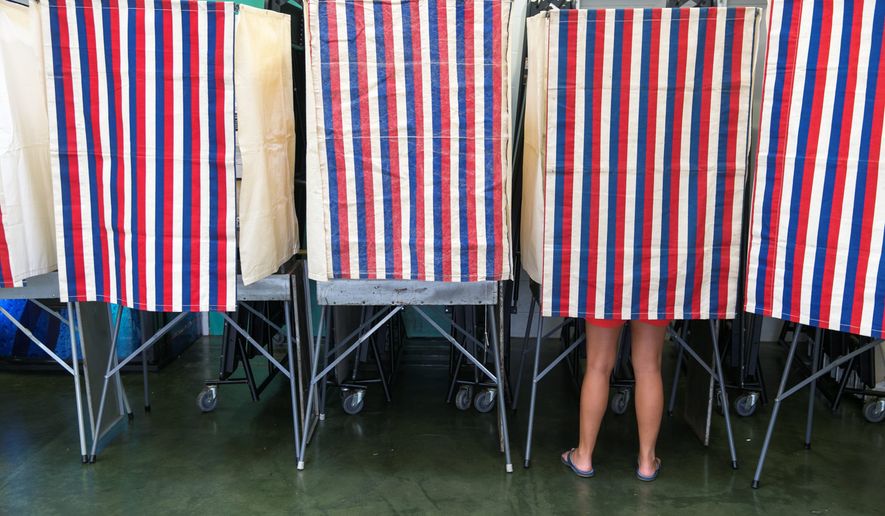Two-thirds of Muslim voters plan to visit the polls on Election Day, and more than half of them are Democratic Party supporters, according to a new survey.
Of 1,500 Muslim registered voters surveyed, 69 percent plan to cast ballots in the Nov. 4 midterm elections and 16 percent do not plan to vote, according to the poll conducted Wednesday by the Council on American-Islamic Relations (CAIR). Fourteen percent declined to answer.
Of the nearly 1,000 Muslim registered voters planning to vote, half said they support the Democratic Party, and 15 percent said they back the Republican Party. About one-quarter of the registered voters did not want to share their political affiliation.
“We’ve seen a general trend of Muslims slowly shifting toward the Democratic Party post-2000 and the election of [George W.] Bush,” said Robert McCaw, CAIR government affairs manager. “There has always been Muslim support for Republicans — that 15 percent is pretty constant. What we also see, though, is 23 percent declined to answer or are unaffiliated. Their votes are up for grabs.”
The survey was conducted only in the five states with the largest Muslim populations: California, New York, Illinois, Florida and Texas.
CAIR also polled Muslims living in Virginia, a “future toss-up state,” Mr. McCaw said.
Mr. McCaw said CAIR has been conducting pre-election surveys for presidential races in an effort “to trace Muslim voting behavior to a greater degree and draw more attention to Muslim voters who are well positioned in swing and battleground states.”
But Geoffrey Skelley, spokesman for the Center for Politics at the University of Virginia, said Republicans might not need to worry just yet about winning back the Muslim vote, noting that Muslims compose about 1 percent of the national voting population.
“I don’t see Muslim voters as having a major influence on the outcome of elections this cycle,” he said. “Looking at the states they pulled none of those states have particularly competitive statewide races going on.”
Parties should care, however, because there are a lot of young Muslims, which means a lot of new voters, said Kathleen Moore, professor and chairwoman of the Religious Studies Department at the University of California, Santa Barbara.
“Look at the Hispanic population. They came of age and wanted to be part of the democratic process,” Ms. Moore said.
Even though Muslims only make up 1 percent of voters, in a swing state “their vote will matter, because it’s such a marginal difference,” Ms. Moore said.
“So Florida being a swing state, Ohio being a swing state, if they constitute as much as 2 or 3 percent, that will matter in the outcome,” she said.
More specific numbers for each state are set to be released Monday, but the national trends “do reflect the local environment,” Mr. McCaw said.
Similar to the 2012 results, the top issues for voters are the economy, health care and civil liberties.
For the first time, the survey added in the issue of Islamophobia “to see how the community responded to that,” Mr. McCaw said. “With recent headlines and fears, it ranked higher than [civil rights] in past years.”
Nationally, 15 percent of Muslim voters said Islamophobia is the most important issue for them.
Mr. McCaw said the shift in Muslim support comes due to anti-Shariah legislation and negative comments “that pop up here and there,” and that also contributes to the shifting of support from the Republican to the Democratic Party.
“The party has to distance itself from individuals who are going to speak hatred and bigotry to Muslims or any other minority,” Mr. McCaw said. “You see the 15 percent base is well settled in the [Republican] party. I hope the party does more to cultivate that base. Republicans can do a better job. Our votes are still up for grabs; we just have to be approached.”
• Meredith Somers can be reached at msomers@washingtontimes.com.




Please read our comment policy before commenting.